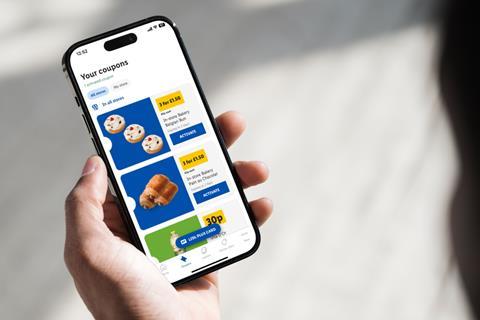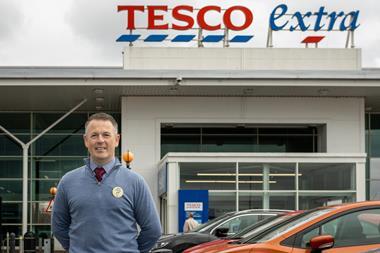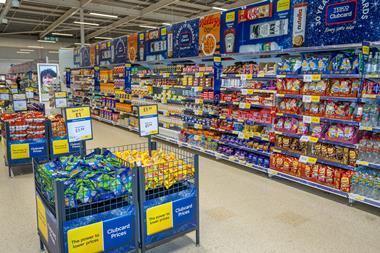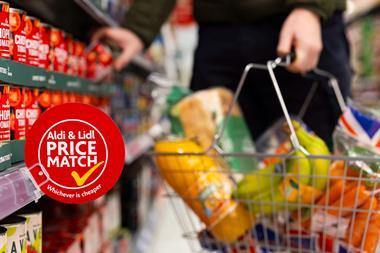
The retail industry is at an inflection point. Both physical and digital spaces are expanding at unprecedented rates.
Aldi is planning to open 500 more stores across the UK, and Lidl has stated its ambition for 247 new stores in London alone, off the back of its loyalty app success over the Christmas period.
So, how do supermarkets accelerate their presence in both areas while providing a seamless and engaging experience for customers?
The answer lies in using digital strategies to complement the physical and vice versa. Digital integration enhanced by AI can boost customer engagement, and in-store shopping habits provide data collection leading to greater personalisation in digital strategies, with personalised loyalty offers leveraging the data of both tying it all together and further increasing stickiness.
It’s not a case of being all physical or all digital – an investment in both, working in tandem, will help supermarkets stack up success, one aisle at a time.
A connected approach to transformation
The whole purpose of implementing technology is to make customers’ lives easier, not hinder them. Supermarkets must think about their physical store investment as an extension of their digital investment, and vice versa. They must ensure both are driving deeper connection to the customer, as well as improved data.
When designing new stores (or revamping old ones) retailers should think about how they can gather more information from the consumer, while simplifying their lives. Camera-based checkout systems are an excellent example of this, providing either self or no-checkout convenience for the customer, but also ensuring the customer’s profile is 100% up to date based on their purchase history, potentially without even requiring them to scan a loyalty card.
When investing in store systems, the key is to ensure they are architected with both the physical and digital channels in mind. That means using modern architectures that lend well to this ‘single view of customer’ or ‘single view of product/promotion/loyalty etc’. These can then be extended into more ‘sophisticated’ technologies such as the camera-driven solutions mentioned above, or dynamic pricing tied into digital shelf-edge tags and working in concert with the online platform.
Ultimately, success lies in building a connected ecosystem of services. British supermarkets should look to their American counterparts, such as Walmart, which has demonstrated this effectively. Its mobile app seamlessly connects the shopping experience across channels while reducing time and friction in-store. In doing so, Walmart saw a 98% increase in mobile orders and a 20% increase in conversions with this improved mobile experience.
The future is data-driven strategies
The rise of AI, which at its core allows retailers to scale everything, will drive further change. With the right holistic data, it means retailers can proactively anticipate customer needs, simplify the shopping experience, lower costs and reduce waste. By eliminating data silos and embracing a holistic view of the shopper journey, supermarkets can invest in technologies that go beyond convenience, providing relevance and personalised experiences for each customer.
To do this, legacy grocers must adapt their business models for the digital consumer, ensuring digital channels work hand in hand with in-store experiences. The future of digital transformation in retail lies in a customer-focused, data-driven strategy. Therefore, visibility into shopping behaviours, patterns, and preferences is the key to sustainable growth for supermarkets.
As the industry continues to evolve, success lies in the ability to keep the customer front and centre, creating a shift towards truly relevant and customer-centric grocery experiences. It’s not just about convenience – it’s about a connection that bridges the gap between digital and physical.
Digital is not just a sales tactic
A final point in this integrated digital/physical view is that digital is too often seen only as a way of driving connection to customers and increased sales. While that is critical, sophisticated retailers are investing heavily in the ‘internal’ usage of digital, to improve efficiency and drive down costs, and these should not be overlooked as supermarkets invest heavily into physical store infrastructure.
Digital applications can improve everything from picking speed to employee mobility, including measurement of customer footfall patterns to improve store layout; optimisation of the supply chain through better inventory visibility or last-mile trunking solutions; vision systems to help reduce shrinkage or improve shelf availability… the opportunities go on and on.
All of them come from a combination of understanding both the physical and digital worlds.



















No comments yet